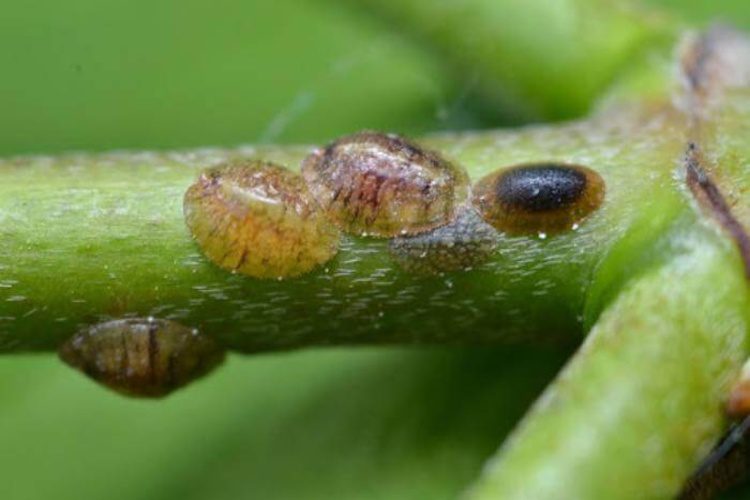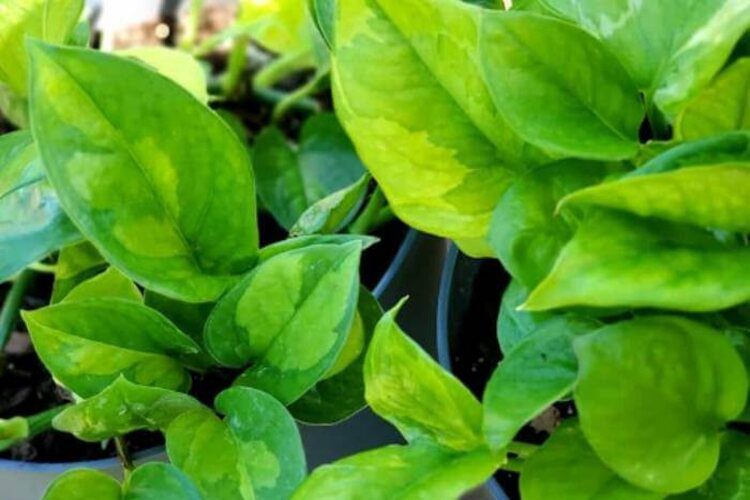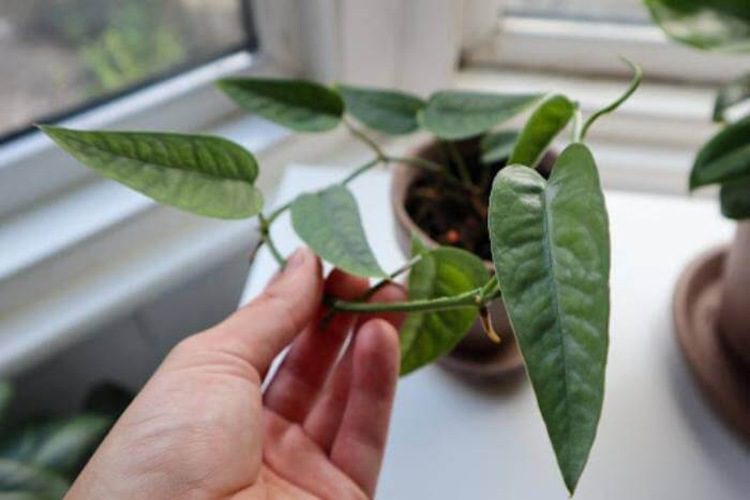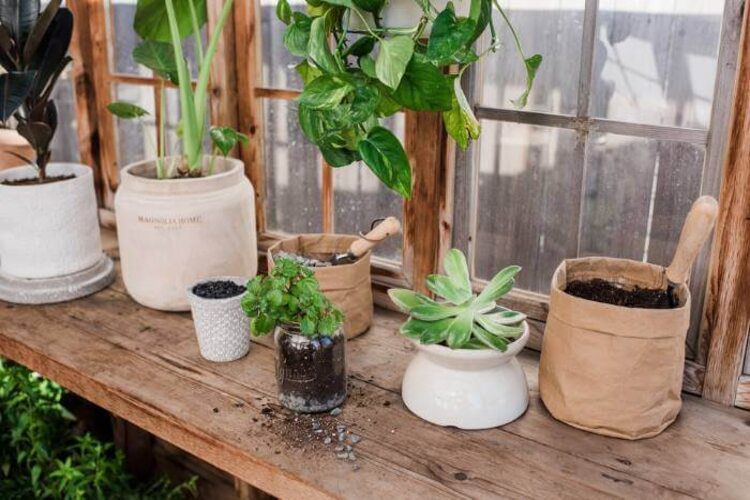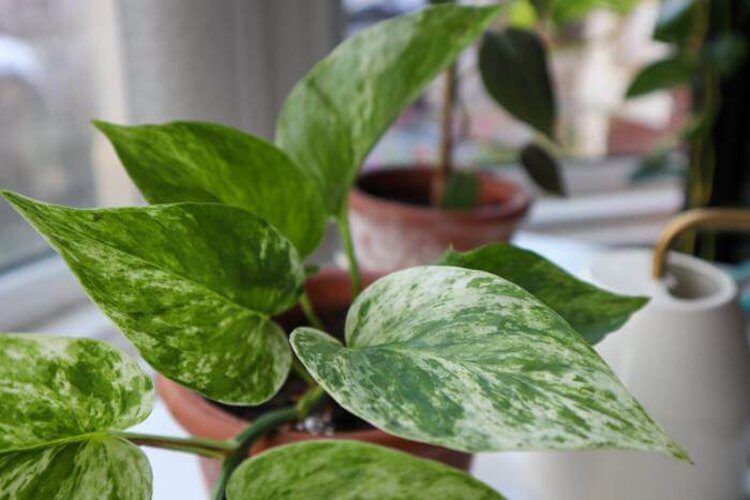Glacier Pothos Care: Simple Guide For Beginners
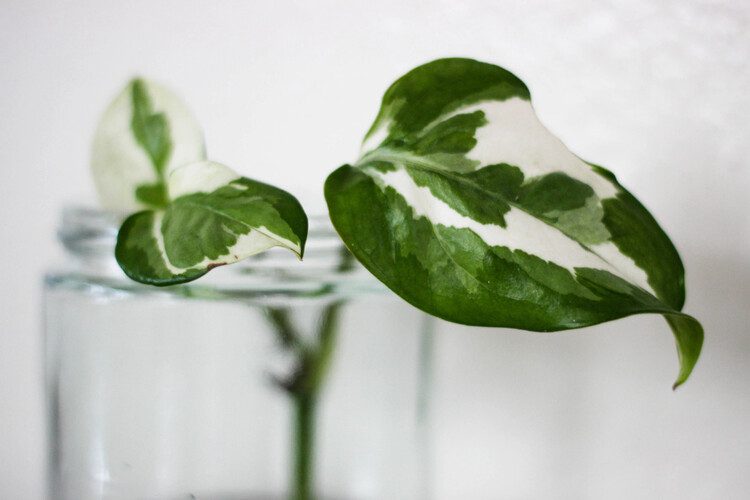
The Glacier Pothos ought to be mentioned when discussing a plant that is employed as interior decoration. has a small size and striking hue. Accordingly, it is safe to assume that Christians who appreciate trees and who also enjoy redecorating will not disregard this plant.
The Epipremnum aureum glacier, often known as the glacier pothos, is a tiny pothos with rounder leaves compared to most other types. Its leaves are variegated with dazzling white striations. This pothos guide is here to welcome you. One of the simplest plants with a variety of colors to maintain is this one.
| Scientific Name | Epipremnum aureum ‘Glacier’ |
| Common Name | Glacier Pothos |
| Family | Araceae |
| Origin | Asia |
| Plant Type | Perennial, vine |
| Bloom Time | Spring, summer |
| Soil | Moist, well- draining |
| Water | Maintain lightly moist |
| Temperature | 65-90°F |
| Sunlight | Medium indirect light |
| Toxicity | Calcium oxalate crystals |
All about Glacier Pothos plants
For indoor plant collectors, the Glacier Pothos species is a rare treat. This distinctive small plant, which has dazzling white and light green variegation, is highly sought-after and generally difficult to locate. The glacier pothos plant is a subspecies of the tropical plant Devil’s Ivy (Epipremnum aureum), which is well-known among indoor gardeners for its near-impossibility to kill. The glacier pothos is very simple to cultivate, just like all other cultivated plants.
There are many types of Pothos plants: Golden Pothos, Marble Queen Pothos, N’Joy Pothos, Jade Pothos, Snow Queen Pothos, Harlequin Pothos,… The N’Joy pothos and Snow Queen pothos, are two more species of multicolored pothos that both have white and green foliage, resembling the glacier pothos plants excellently. However, the thinner, rounder leaf shape of the glacier pothos sets it apart from the other plants.
Since the glacier pothos is one of the smaller variegated pothos kinds, it is ideal for desks and other tiny areas. It also has somewhat distinct white markings. Three hues may be seen on the Pothos glacier. If you look closely, you can see an intermediate silver between the white and green parts of its leaves. The white marks on the glacier are streaky rather than patchy, unlike those on the N’Joy Queen plant, and they also have a distinct form.
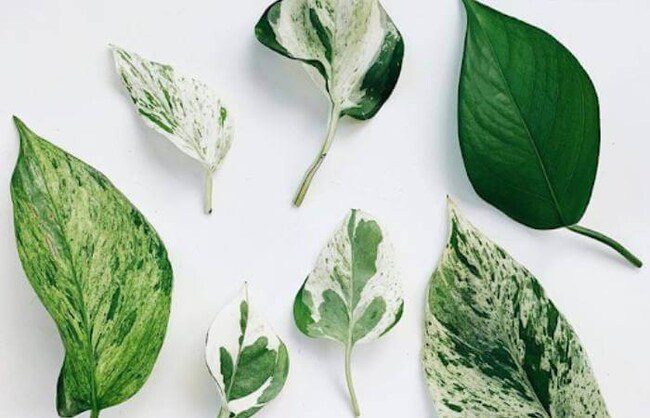
Glacier Pothos care
The Glacier Pothos are attractive, easy to care for, and beautiful plants that are ideal for both novice and experienced gardeners. Pretty much all you need to keep these pothos happy is semi-regular watering and a sunny window.
This variegated cultivator won’t pose a challenge for you if you’ve previously taken care of another variety of pothos. Don’t worry if your plant isn’t erupting with new growth, though, as the glacier pothos is said to grow more slowly than some of its siblings in the pothos family.
Light
The abundance of bright, indirect light is appreciated by these pothos. The glacier pothos can thrive in medium-bright light as well, but keep in mind that a site that receives several hours of bright, indirect light is more optimal than direct sunlight. This is not a low-light-tolerant pothos variety, though many are. As a result of its intensely variegated leaves, the glacier pothos will grow leggy and start to lose its variegation if it does not get enough light.
Soil
A soil mixture that is well-draining but still holds some moisture should be used to plant Glacier Pothos. This equilibrium will be easier to reach with a 1:1 ratio of organic and mineral components. For instance, you may quickly mix up a simple solution at home using goods from your neighbourhood nursery or garden centre: equal parts indoor potting soil and perlite.
While most indoor potting soil does contain some perlite, adding more before planting your glacier pothos will make sure that the soil won’t become compact over time and will ensure plenty of drainage for the plant’s roots.
Watering
You should use just enough water to avoid root rot when taking care of the plant. To avoid overwatering and root rot, make sure to always let any extra water drain from the pot’s drainage holes after each watering. After thoroughly watering, allow the top 2 to 3 inches of soil to completely dry off. While this pothos likes to be watered frequently, it can also withstand drought conditions, so between waterings, it should be given a little time to dry out.
Fertilizer
The glacier pothos thrives on routine fertilizer during the active growing season to ensure vigorous, healthy growth. For maximum results in the spring and summer, apply a balanced liquid fertilizer once a month. Once the plant has stopped growing aggressively in the fall and winter, stop fertilizing.
Temperatures
Temperatures between 65 and 75 degrees Fahrenheit are ideal for pothos, which are native to warm, humid climates (18 to 24 degrees Celsius). This makes them ideal for growing indoors, and the glacier pothos is no exception. Keep in mind that glacier pothos are not frost-tolerant plants and that they should not be placed near any windows that are chilly or draughty during the winter to prevent them from experiencing a shock.
Humidity
For most houses, a humidity level of 50 to 70% is appropriate. However, glacier pothos can tolerate lower levels as well.
Repotting
When white roots start to develop around the sides of the soil or start to slither through the drainage holes, it’s time to repot your pothos glacier. Aim to increase the size of your pot before it gets to this point. In most cases, repotting should be done after the plant has doubled in size. If the container is significantly larger, the excess soil might cause waterlogging and root rot. Instead, choose a new pot that is about two inches wider in diameter than the previous one.
How To Do Glacier Propagation?
The Pothos Glacier may be readily multiplied by stem cuttings, just as any other pothos. By transplanting the rooted cuttings into the same pot, you may grow your pothos to a larger size. It can be completed in a few simple steps.
Step 1: Use a pair of pruning shears or scissors to clip stems from a healthy glacier plant. There should be at least three to four nodes on the stem of each stem cutting, but no more than six or seven.
Step 2: Take the bottom off. 1 to 2 leaves from each cutting are needed to reveal the nodes at the stem’s base.
Step 3: Fresh water should be prepared in a container, and the stem cuttings should be submerged in the water with the pothos of the top of the cutting remaining above the surface.
Step 4: The cuttings should be placed in an area that receives bright, indirect light, and the water should be changed once each week. The nodes around the stem should start to produce little white roots after a few weeks.
Step 5: The rooted cuttings should be inserted into a small pot or pots that have been prepared with well-draining potting soil. Replant the planted cuttings in their original, well-lit position after giving them a thorough watering and allowing any extra water to drain from the container.
Step 6: To aid the cuttings in readjusting to the soil during the first several weeks, you should maintain a uniform moisture level in the soil. You can resume leaving the soil slightly dry between waterings after one to two weeks.
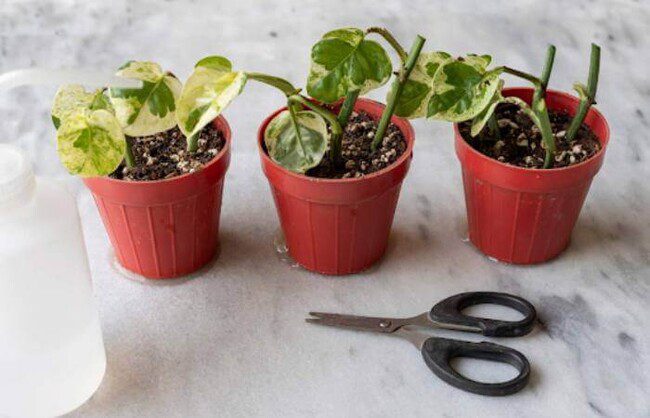
Glacier Pothos Problems
The glacier pothos is often trouble-free and requires just moderate maintenance. As you learn how to take care of this tropical vine inside, there are a few frequent issues that you could encounter, just like with any other plant.
Yellow leaves
The most common cause of yellowing leaves on glacier pothos is underwatering. Yellow leaves, however, can also indicate overwatering, a lack of light, or perhaps even too much light. Examining the conditions in which your plant is developing in detail may help you determine which one may be the problem.
Although this problem is difficult to completely solve, it can still be improved. You can use sugar water to mist the plants once a day. After 4 to 5 continuous days, you will notice a significant improvement in the yellowing of the leaves.
Dark Leaves
Brown leaves may be an indicator that your plant is suffering from a lack of humidity, being underwater, or from leaf burn brought on by too much direct sunlight. Make sure to keep these pothos away from extremely dry areas in the house and out of direct sunlight since it will burn their delicate leaves. For the sake of keeping your plant from drowning, make sure you water it frequently.
Glacier vs. N’joy Pothos features
Glacier and N’Joy pothos are two species that have some similarities in appearance that people usually mistake for each other. However, they have different development patterns and outward characteristics. There are distinctions in the dimensions of the plant, the size of the leaves, the color of the leaves, and the rate of growth. The vast majority of plant maintenance for both genotypes is comparable, though.
Color and Variegation of the Foliage
With a white backdrop and a deeper green distributed network, white and green are distinguishable in N’Joy pothos, on the other hand, there are leaves with deeper greenish-gold accents and a silver hue.
Shape and texture of leaves
Although both plants have leaves with a heart shape, Pothos N’Joy’s are a little more ovate and have a less rounded tip. Two distinct textures are also possible for the leaves of the N’Joy plant. The bottom of the leaf’s texture can change from its smooth and waxy top to a more leathery one.
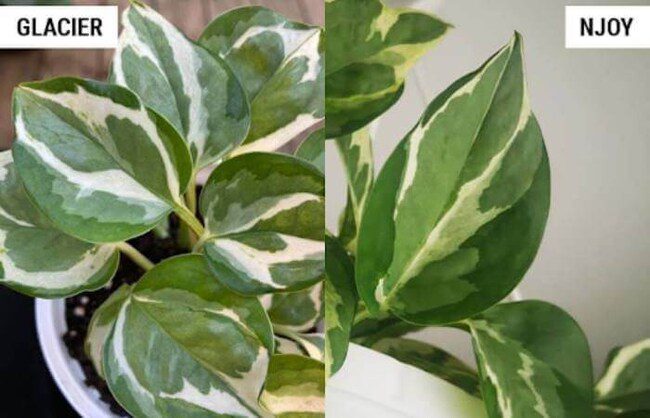
Conclusion
That is all there is to know about Glacier Pothos. After reading this, perhaps you now know the necessity to cultivate this plant expertly and answering the question in the right way. I wish you early success.
For more lively instruction, follow this video:
FAQs




